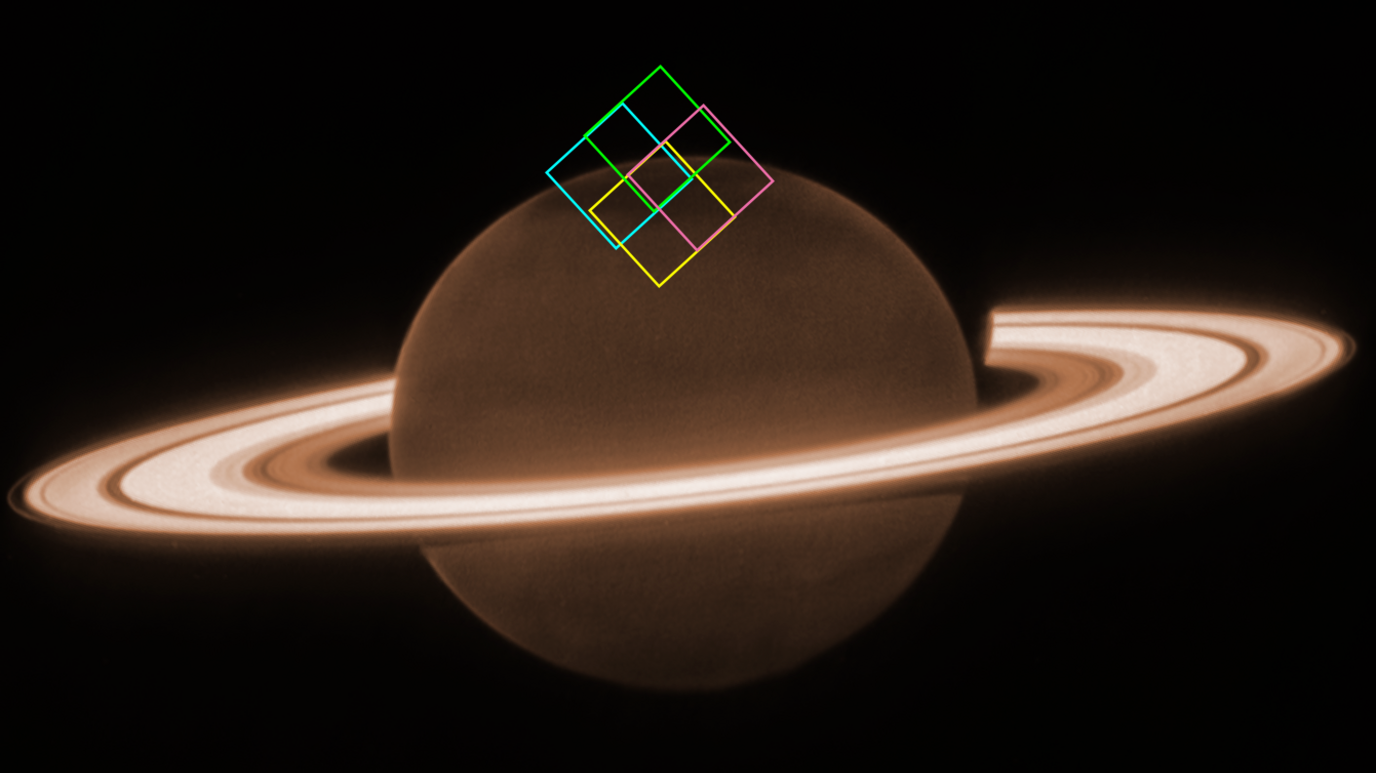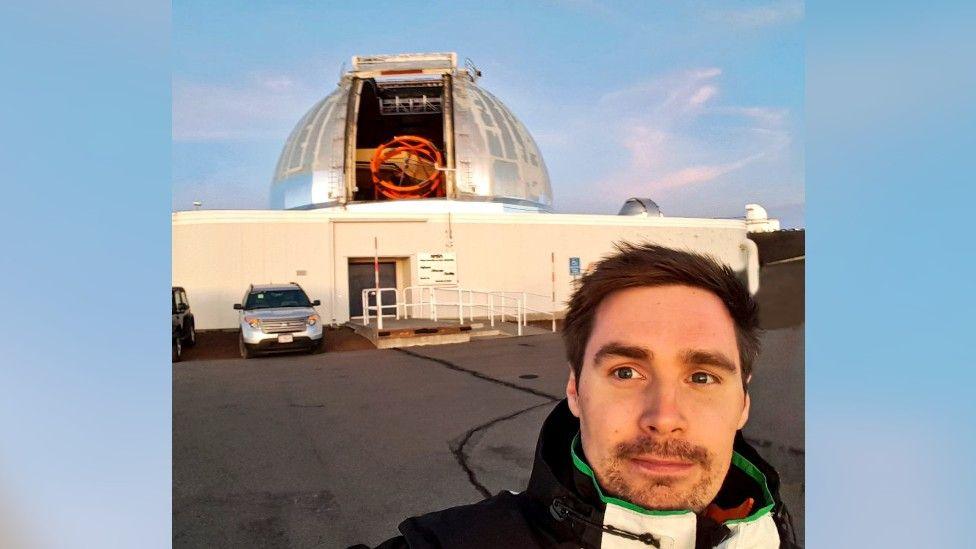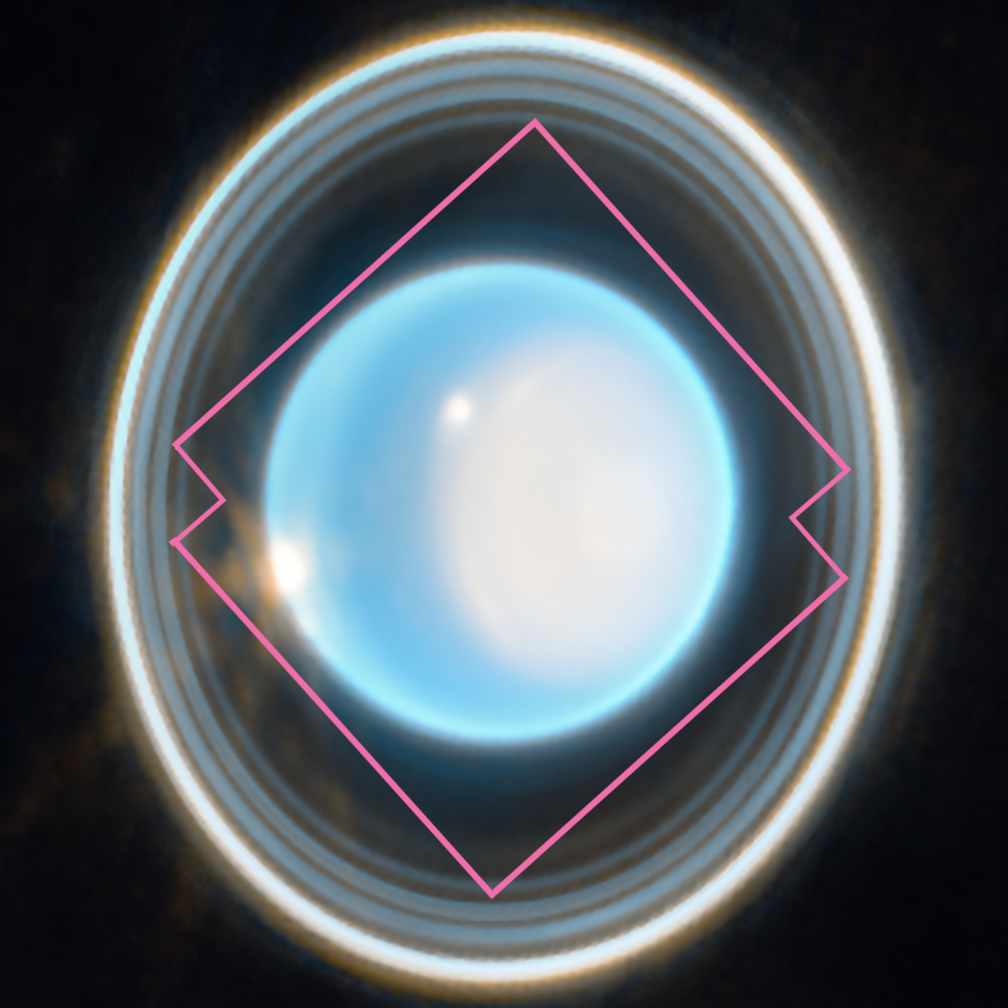'Game-changing' study into Saturn's northern lights
Footage of Saturn's northern lights taken by the Cassini spacecraft in September 2007
- Published
An astronomer is set to use the most powerful telescope ever created to get a "game-changing" view of Saturn's northern lights.
Dr James O’Donoghue from the University of Reading is part of a team that has been awarded time with the James Webb Telescope (JWST).
They hope to work out what is causing the planet's northern lights and will also observe Uranus.
Dr Henrik Melin, who is from the University of Leicester School of Physics and leading the research team, said it could "fundamentally shape our understanding" of both planets.

An infrared image of Saturn, taken by the James Webb Telescope, showing the areas the study will look at
Northern lights are generally caused by highly energetic charged particles, which are funnelled down and collide with a planet's atmosphere via the planet's magnetic field.
"Our magnetic field is basically a big shield, and the Sun's solar wind is actually hitting that shield and that's allowing loads of charged particles to come into our atmosphere and create a dazzling light show in the polar regions," said Dr O'Donoghue.
But the exact origins of the aurora for Saturn and Uranus are a little less clear - something the study aims to change.
For Uranus specifically, they are looking to answer a key question - whether the aurora is caused by interaction with the solar wind like on Earth, internal sources within the system like Jupiter, or somewhere in between like Saturn.
Dr O'Donoghue also said he had a "secret hope" it could tell scientists more about the rotation period - day length - of the planets.
"I really am looking forward to it," he said.

Dr O'Donoghue said the images would be "game-changing"
The JWST is in space so it avoids "our pesky atmosphere with its clouds", Dr O'Donoghue said.
The two research proposals were among 1,931 submissions for the JWST Cycle 3 General Observer Program.
The project will capture images over the course of an entire day for each planet.
The observations of Saturn will take place in late 2024 and Uranus in early 2025.

An infrared image of Uranus from the James Webb Telescope
Video from the University of Reading
Follow BBC South on Facebook, external, X, external, or Instagram, external. Send your story ideas to south.newsonline@bbc.co.uk, external.